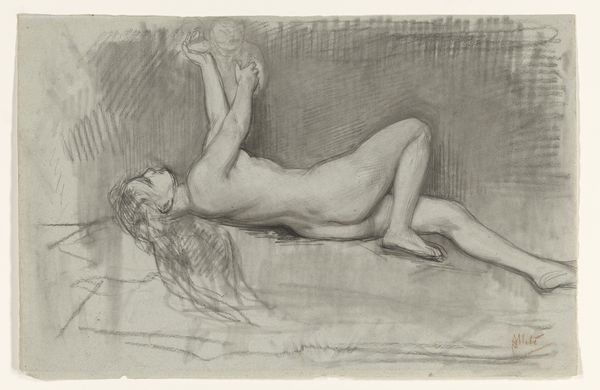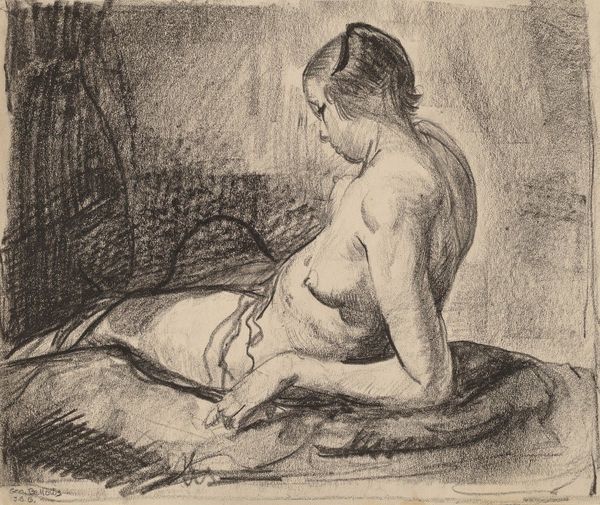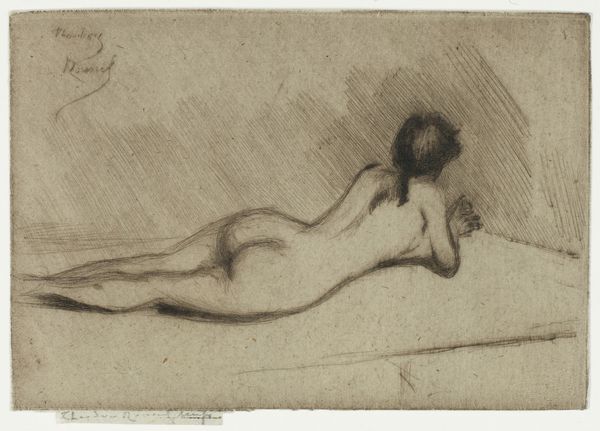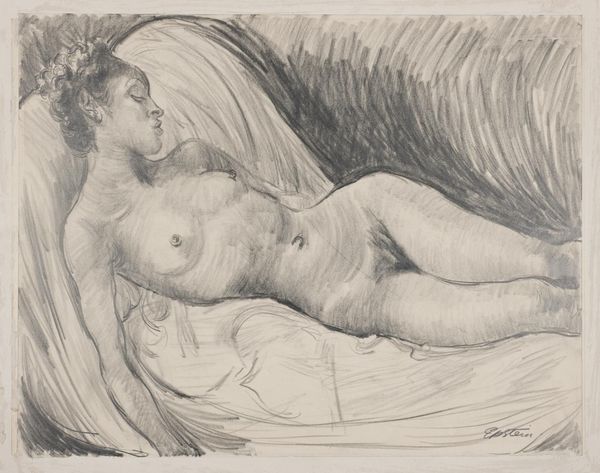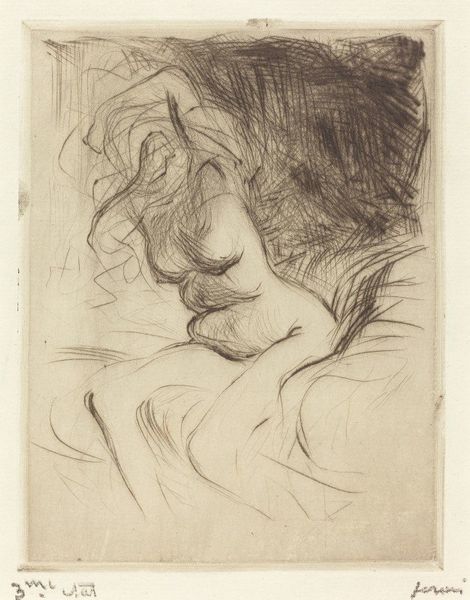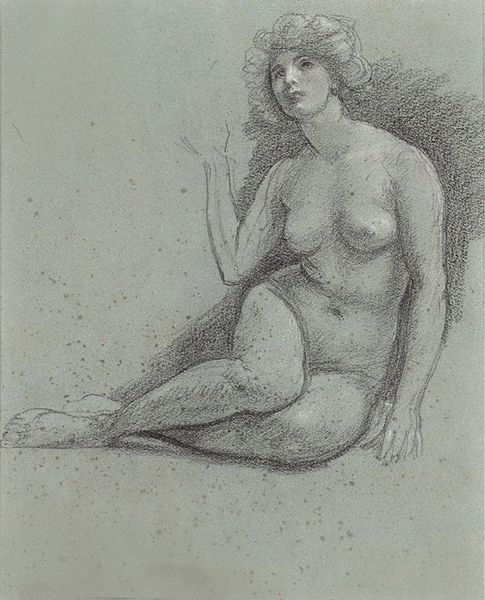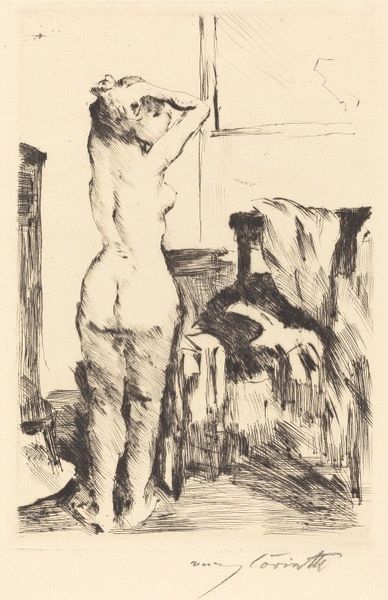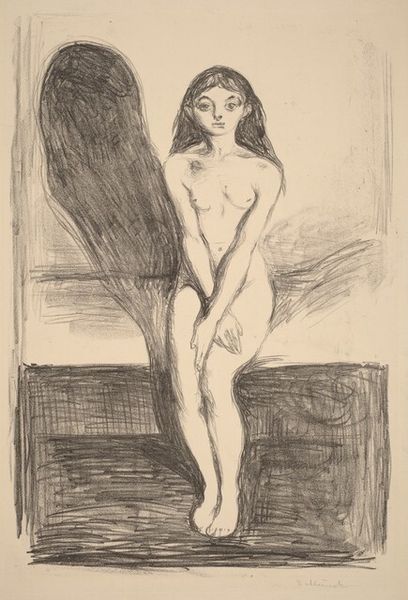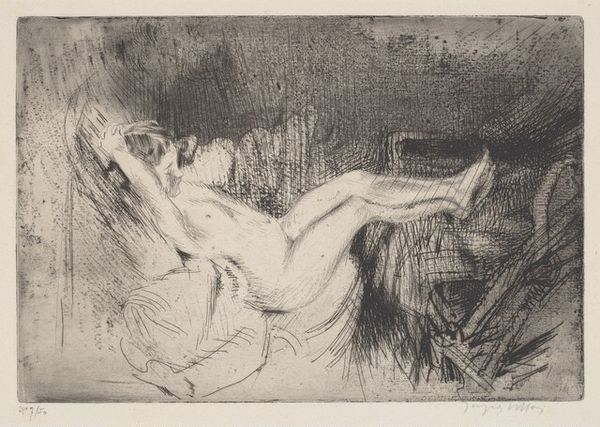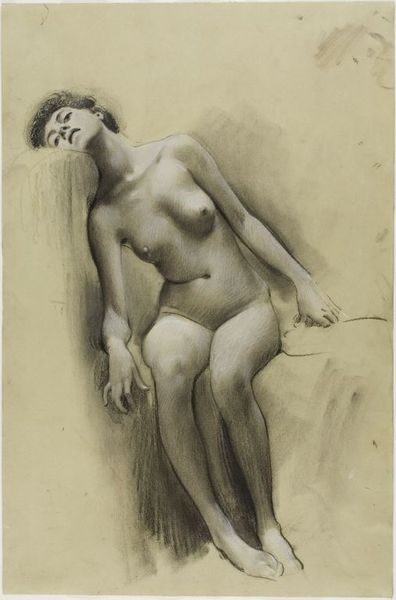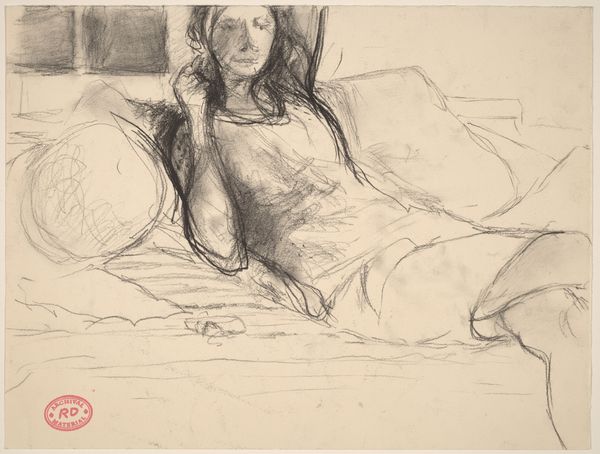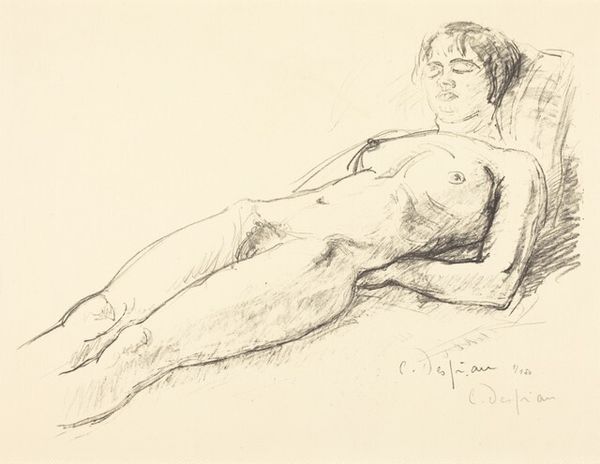
Copyright: National Gallery of Art: CC0 1.0
Editor: So, this is Albert Edward Sterner’s “Reclining Nude,” likely drawn around 1909, and crafted in charcoal. There’s something so immediate about the loose, impressionistic strokes; it almost feels like we're intruding on a private moment. What do you see in this piece? Curator: You’ve put your finger right on it. For me, this isn't just about the female form; it's a study in intimacy and observation. Sterner’s choice of charcoal lends itself beautifully to capturing the subtle play of light and shadow, don’t you think? It whispers rather than shouts. Does the somewhat unfinished quality enhance or detract from its power, in your opinion? Editor: I think it adds to it! It feels less posed, more real, even a little vulnerable. The way she gazes into that mirror… it’s like she’s confronting herself, her own imperfections. It makes the viewer wonder what *she’s* thinking. Curator: Precisely! It becomes less about *her* and more about *us* reflecting on our own perceptions. We bring our own stories to this 'incomplete' tableau. Do you get a sense of the artistic circles Sterner moved in? I like to think about the work as existing between Belle Epoque elegance and something far more questioning and raw… Editor: That's so interesting – a kind of push and pull! It challenges assumptions. I initially just saw a nude, but now I see it as a mirror reflecting much more than just the subject's physical form. Curator: It’s that dance between what’s revealed and what's concealed. It's about beauty but also about being seen and being known. Always a good mix!
Comments
No comments
Be the first to comment and join the conversation on the ultimate creative platform.
